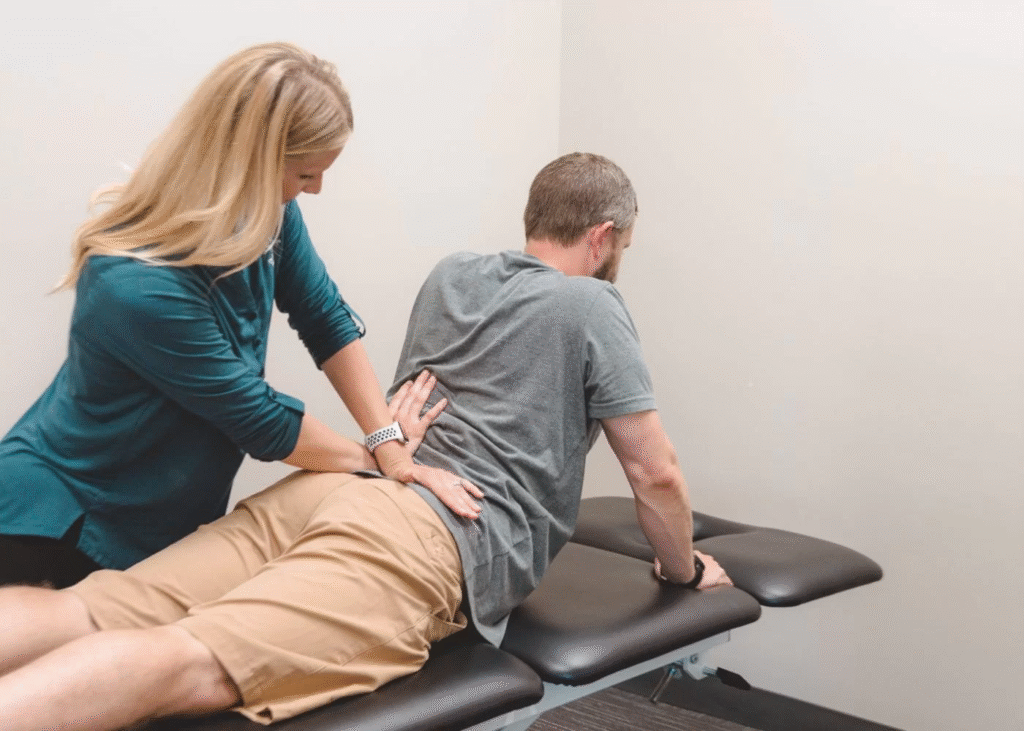Back pain is one of the most common health concerns people face today. Whether it’s a dull ache after a long workday, a sudden sharp pain from lifting something heavy, or chronic discomfort that never seems to go away, back issues can affect your daily life in many ways. For many individuals, searching for a “physical therapist near me for back pain relief” becomes the first step toward finding real, lasting comfort.
If you’re dealing with back pain and wondering how a physical therapist can help, this article will walk you through everything you need to know—from causes of back pain, benefits of physical therapy, treatment approaches, and tips for choosing the right therapist close to you.
Why Back Pain Is So Common
Back pain doesn’t discriminate; it affects people of all ages and backgrounds. There are several reasons why it’s so widespread:
- Sedentary Lifestyle – Sitting for long hours at desks, in cars, or on couches can weaken the muscles that support your spine.
- Poor Posture – Slouching or improper alignment when sitting, standing, or sleeping puts pressure on your back.
- Heavy Lifting – Jobs or workouts that involve lifting can strain muscles if done incorrectly.
- Injuries – Sports injuries, accidents, or even sudden awkward movements may trigger pain.
- Aging – As we get older, natural wear and tear on the spine may lead to conditions like arthritis or herniated discs.
What Does a Physical Therapist Do for Back Pain?
A physical therapist (PT) is a licensed healthcare professional trained to evaluate and treat musculoskeletal conditions, including back pain. Unlike pain medications that only provide temporary relief, physical therapy focuses on finding the root cause of pain and building strength, flexibility, and stability to reduce future problems.
Here’s how they typically help:
- Assessment: The PT starts by asking questions about your lifestyle, pain triggers, and medical history. They’ll often perform physical exams to check your posture, range of motion, and muscle strength.
- Customized Plan: Based on their findings, they design a personalized treatment program aimed at your specific condition.
- Hands-On Therapy: Some PTs use manual therapy techniques, including massage, joint mobilization, or stretching to relieve stiffness and tension.
- Exercise Program: You’ll learn exercises to strengthen weak muscles, improve flexibility, and correct posture.
- Education: PTs also teach patients how to move correctly, sit properly, and make small adjustments in daily activities that protect the back.
Types of Back Pain Physical Therapists Treat
Physical therapists are equipped to handle a wide variety of back pain conditions. Common ones include:
- Muscle Strain or Sprain – Pain caused by overstretching or tearing muscles and ligaments.
- Herniated or Bulging Disc – When the cushions between spinal bones slip out of place, pressing on nerves.
- Sciatica – Sharp pain that travels from the lower back down through the legs, often caused by nerve irritation.
- Arthritis in the Spine – Stiffness and pain from joint inflammation.
- Postural Pain – Discomfort from prolonged slouching or poor workstation setups.
- Post-Surgery Rehabilitation – Helping patients regain strength and mobility after back surgery.
Benefits of Seeing a Physical Therapist for Back Pain
- Drug-Free Pain Relief – Unlike painkillers that only mask symptoms, PT addresses the root cause.
- Improved Mobility – Therapy restores flexibility, strength, and movement, helping you stay active.
- Personalized Care – Each plan is tailored to your pain level, fitness, and goals.
- Prevention of Future Injuries – By teaching proper movement and strengthening muscles, PT reduces the risk of recurring pain.
- Cost-Effective in the Long Run – Treating back pain early can prevent the need for expensive surgeries or long-term medications.
What to Expect at Your First Visit
If you’ve searched “physical therapist near me for back pain relief” and booked an appointment, you might wonder what happens during your first session. Generally, here’s the process:
- Initial Consultation – The therapist asks about your pain, daily activities, medical history, and any prior treatments.
- Physical Evaluation – They’ll test your range of motion, flexibility, posture, and muscle strength.
- Goal Setting – Together, you’ll set achievable goals like reducing pain, returning to sports, or simply being able to work without discomfort.
- First Exercises or Treatment – You’ll likely begin with gentle exercises, stretching, or manual therapy during the same session.
- Homework Plan – Expect to be given home exercises to continue progress between visits.
Finding the Right Physical Therapist Near You
When you’re searching for a physical therapist near me for back pain relief, keep these factors in mind:
- Credentials & Licensing: Make sure the PT is licensed and trained in treating back conditions.
- Experience: Ask about their background in handling cases similar to yours, such as sciatica or post-surgical recovery.
- Specializations: Some PTs specialize in sports injuries, spinal care, or chronic pain management.
- Location & Convenience: Choose a clinic close to home or work so attending regular sessions is easier.
- Reviews & Recommendations: Check online reviews or ask friends, family, or your doctor for referrals.
- Insurance Coverage: Confirm whether the clinic accepts your insurance to manage costs effectively.
Simple Exercises PTs May Recommend
Physical therapy often includes exercises that you can practice at home. Here are a few commonly suggested ones:
| Exercise | Purpose | How It Helps |
|---|---|---|
| Pelvic Tilt | Strengthens lower back & core | Reduces stiffness and improves posture |
| Cat-Cow Stretch | Improves spine flexibility | Eases tension and increases mobility |
| Knee-to-Chest Stretch | Relieves lower back tension | Helps with sciatica and lumbar pain |
| Bridge Exercise | Strengthens glutes & core | Supports spine and reduces pain |
| Child’s Pose | Gentle stretching | Relaxes back muscles and reduces stress |
Lifestyle Changes to Support Back Pain Relief
Along with PT sessions, small lifestyle adjustments can go a long way in keeping back pain away:
- Maintain good posture when sitting and standing.
- Use ergonomic chairs or supportive cushions if you work long hours at a desk.
- Stay active—regular walking, swimming, or yoga helps keep your spine healthy.
- Lift objects using your legs, not your back.
- Keep a healthy weight to reduce pressure on the spine.
- Stretch daily to prevent stiffness.
Conclusion
Back pain may feel overwhelming, but the good news is that you don’t have to live with it forever. With the help of a licensed physical therapist, you can not only relieve your current discomfort but also prevent future episodes. When searching for a “physical therapist near me for back pain relief,” remember to look for someone experienced, approachable, and convenient for your lifestyle.
Taking that first step toward therapy can be life-changing—helping you get back to work, hobbies, and a pain-free daily routine.
FAQs
1. How many physical therapy sessions do I need for back pain?
The number of sessions varies depending on your condition. Some people feel relief in 4–6 visits, while chronic cases may require several weeks of consistent therapy.
2. Can physical therapy replace surgery for back pain?
In many cases, yes. PT often helps avoid surgery by strengthening muscles and correcting posture. However, for severe structural issues, surgery may still be necessary.
3. Is physical therapy painful?
While you might experience mild soreness as your body adjusts, PT should never cause severe pain. Therapists always work within your comfort level.
4. Do I need a doctor’s referral to see a physical therapist?
This depends on your state or country. Many areas allow “direct access,” meaning you can book a PT without a referral, but some insurance providers may still require one.
5. What should I wear to my physical therapy appointment?
Wear comfortable, loose clothing that allows free movement. Athletic wear like t-shirts, shorts, or yoga pants is usually recommended.



